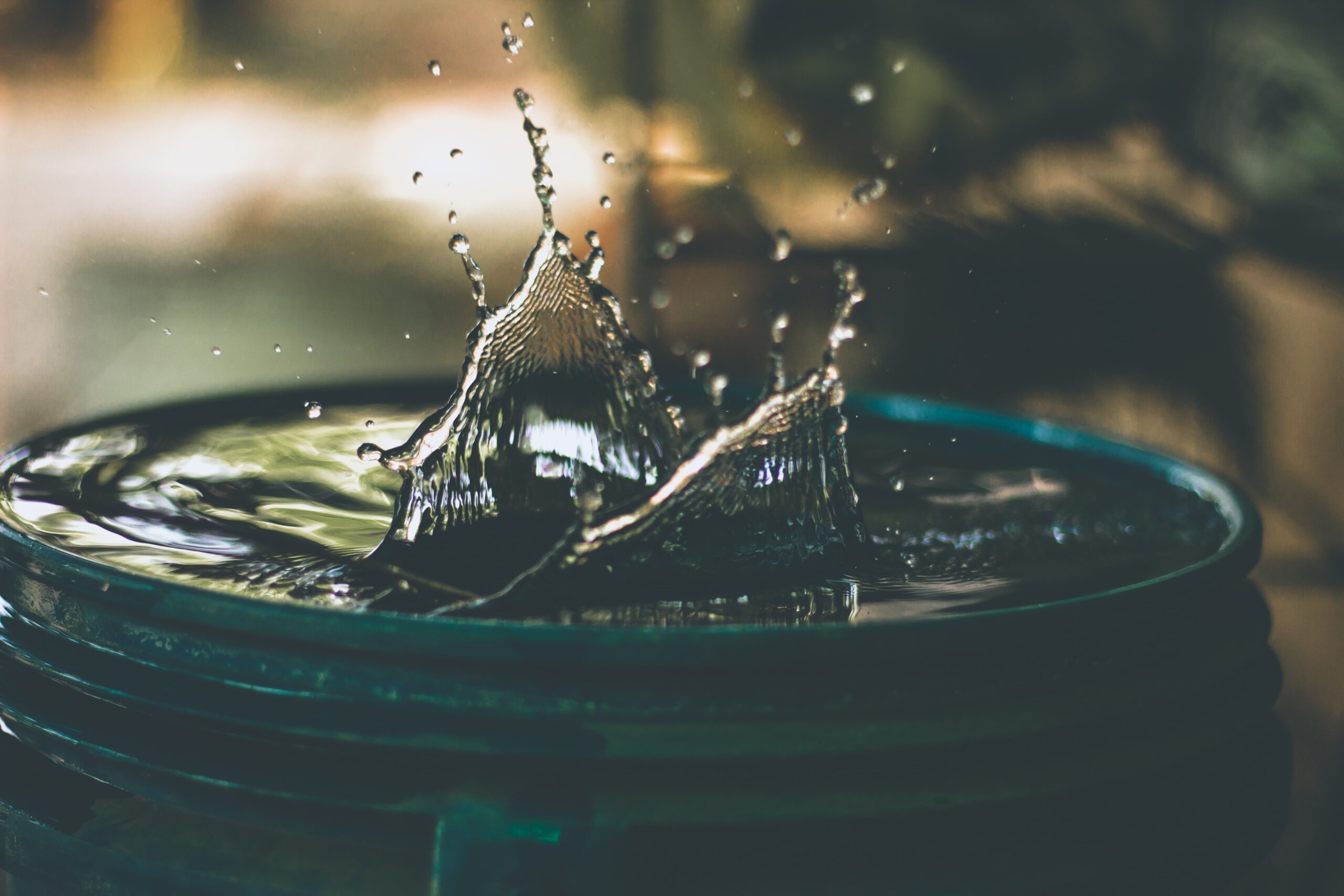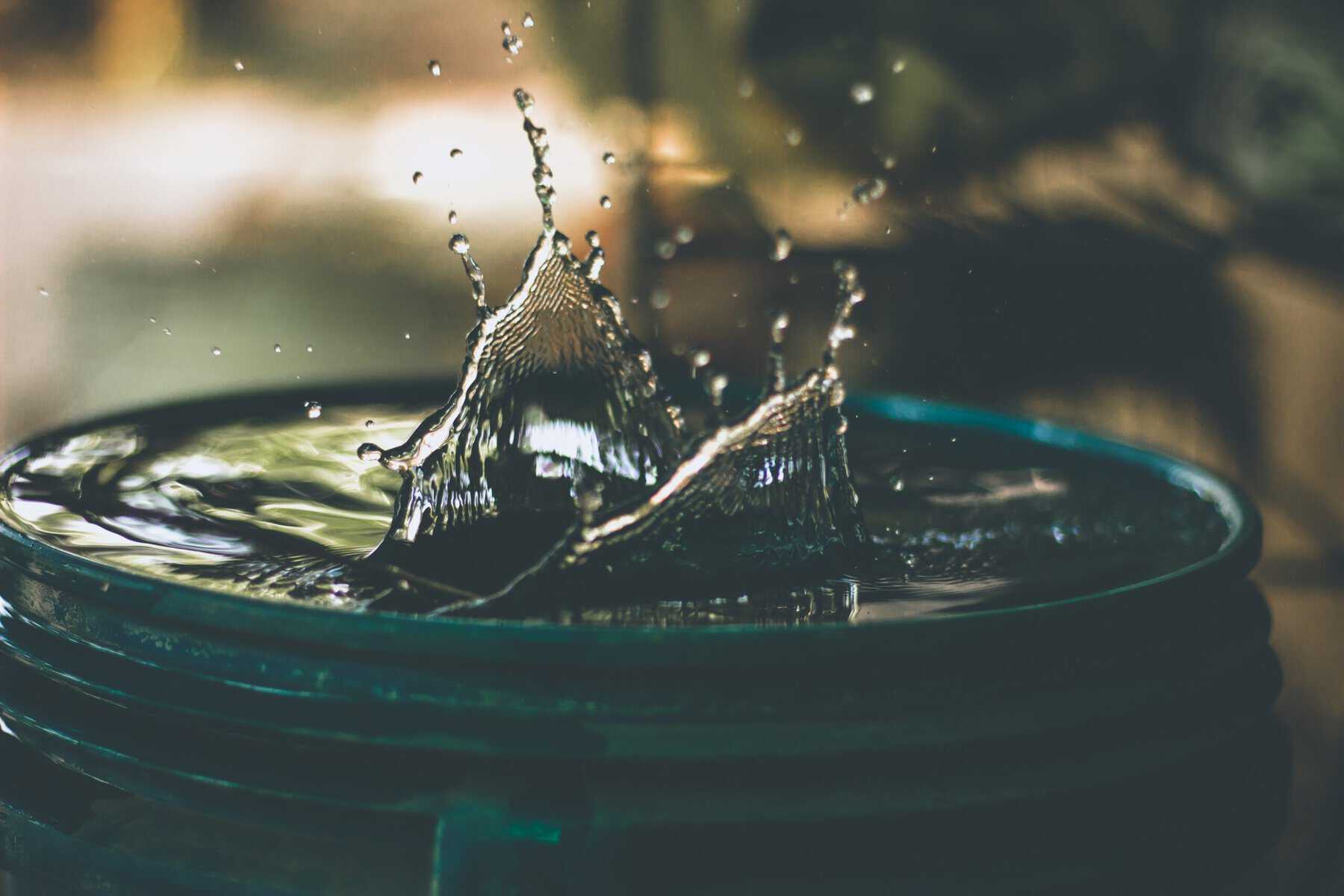Are you concerned about the potential contamination of your well water by volatile organic compounds (VOCs)? If so, you’re not alone. Many homeowners are becoming increasingly aware of the potential health risks posed by these chemicals. Fortunately, there are steps you can take to protect yourself and your family. This article will provide you with valuable information on the safety measures you can implement to prevent well water contamination by VOCs. By following these steps, you can ensure that your water remains clean and safe for consumption.
Regular Testing of Well Water
Frequency
Regular testing of well water is essential to ensure its quality and to prevent contamination by volatile organic compounds (VOCs). The frequency of testing depends on various factors such as the quality of the water source, proximity to potential contamination sources, and any specific regulations or guidelines set by local authorities. In general, it is recommended to test well water at least once a year. However, if there are known or suspected contamination sources nearby, more frequent testing may be necessary.
Testing Methods
There are several testing methods available to analyze well water for VOC contamination. The most common method is the use of laboratory testing, where water samples are collected and sent to qualified laboratories for analysis. The samples are typically analyzed using gas chromatography or similar techniques to detect and quantify VOCs. Another method is on-site testing using portable test kits, which allow for quick and convenient analysis of specific VOCs. It is important to ensure that the testing methods used are reliable and accurate, and that the laboratory or testing facility is accredited and has a good reputation for providing accurate results.
Qualified Laboratories
When testing well water for VOC contamination, it is crucial to use qualified laboratories that meet the necessary standards and certifications. Look for laboratories that are accredited by reputable organizations such as the National Environmental Laboratory Accreditation Program (NELAP) or the Environmental Laboratory Accreditation Program (ELAP). These accreditations ensure that the laboratory follows strict quality control measures and employs trained professionals who are experienced in analyzing water samples for VOCs. Choosing a qualified laboratory will give you the confidence that the test results are reliable and accurate.
Proper Well Maintenance
Sealing the Well
Properly sealing your well is vital to prevent the entry of contaminants, including VOCs. The well casing should be securely sealed to prevent any surface water, animals, or debris from entering the well. Regular inspections of the well casing and seals should be conducted to identify any signs of damage or deterioration. If any issues are detected, it is essential to repair them promptly to maintain the integrity of the well and prevent contamination.
Maintaining a Protective Cap
A protective cap is essential for well maintenance as it prevents any potential contamination of the wellhead. The cap should be securely positioned and tightly sealed to prevent the entry of any foreign substances. It is advisable to periodically check the cap for any signs of wear and tear, and if necessary, replace it or repair it immediately. Keeping the protective cap in good condition is an important step in maintaining the overall integrity of the well and safeguarding against VOC contamination.
Regular Inspections
Regular inspections of your well can help identify any potential issues or vulnerabilities that could lead to contamination by VOCs. It is recommended to schedule inspections at least once a year by a qualified professional or well contractor. During the inspection, the professional will check the integrity of the well casing, the condition of the protective cap, and any other components of the well system. Any necessary repairs or maintenance tasks can be addressed promptly, ensuring the ongoing protection of your well water from VOC contamination.
Well Location
The location of your well can significantly impact the vulnerability of your water source to VOC contamination. When choosing a location for your well, it is crucial to consider potential contamination sources such as underground storage tanks, industrial facilities, or agricultural activities. Avoiding areas where these sources are present can minimize the risk of VOC contamination. If your well is already located in a potentially vulnerable area, implementing additional protective measures such as regular testing and source water protection can help mitigate the risk of contamination.

Avoiding Contaminant Sources
Proper Chemical Storage
Proper storage of chemicals is crucial in preventing well water contamination by VOCs. Household chemicals, cleaning agents, pesticides, and herbicides should be stored in a secure and designated area that is well-ventilated and away from the well. Ensure that all containers are tightly sealed to prevent any leaks or spills. It is also essential to follow proper disposal guidelines for any unused or expired chemicals, as improper disposal can lead to contamination of the surrounding soil and groundwater.
Septic System Maintenance
A well-maintained septic system is vital for preventing VOC contamination of well water. Regular inspections and maintenance of the septic system should be carried out to identify any potential leaks or malfunctions that could allow VOCs to enter the groundwater. Ensure that the septic system is properly designed, installed, and maintained according to local regulations and guidelines. Proper maintenance includes regular pumping of the septic tank, avoiding the disposal of non-biodegradable or harmful substances, and promptly addressing any issues or repairs.
Preventing Runoff
Controlling and preventing runoff is crucial in safeguarding well water from VOC contamination. Avoid using excessive amounts of pesticides, herbicides, or fertilizers, as these can seep into the ground and reach the groundwater. Follow proper application guidelines and avoid applying chemicals near the well or areas with potential runoff paths. Additionally, maintain and promote vegetative cover on your property as it helps absorb rainfall and reduces the chances of contaminants reaching the groundwater.
Pesticide and Herbicide Use
Proper and responsible use of pesticides and herbicides is essential in preventing VOC contamination of well water. Only use these chemicals when necessary and follow the instructions provided on the label. Avoid using more than the recommended amount and always apply them according to the specified application rates. Consider alternative methods of pest and weed control, such as integrated pest management techniques, which aim to reduce reliance on chemical treatments. Responsible use of pesticides and herbicides can minimize the risk of VOC contamination and promote healthier well water.
Implementing Source Water Protection
Identify Potential Contamination Sources
Implementing source water protection involves identifying and assessing potential contamination sources that could impact the quality of your well water. Conduct a thorough survey of your property and its surroundings to identify any potential risks such as underground storage tanks, industrial facilities, livestock operations, or agricultural activities. Understanding the sources and their proximity to your well will help you develop appropriate protective measures and preventive strategies.
Establish Buffer Zones
Creating buffer zones around your well can provide an additional layer of protection against VOC contamination. A buffer zone is an area of land between potential contamination sources and the well where activities are limited or restricted. The size of the buffer zone will depend on various factors, including the type of contamination source and the geology of the area. Establishing buffer zones can help reduce the risk of contaminants reaching the well water, providing an added level of assurance for its quality.
Control Land Use Practices
Controlling land use practices around your property can significantly impact the vulnerability of your well water to VOC contamination. Avoid or restrict activities that might contribute to the contamination of groundwater, such as improper disposal of hazardous waste, uncontrolled wastewater discharges, or excessive use of chemicals. Promote environmentally friendly practices, sustainable agriculture, and responsible waste management within your community to minimize the overall risks to the groundwater resources.

Installing a Point of Entry Treatment System
Activated Carbon Filters
One effective method for removing VOCs from well water is through the use of activated carbon filters. These filters use a highly porous carbon material to adsorb VOC molecules and other contaminants as the water passes through the filter. Activated carbon filters can effectively remove a wide range of VOCs, including common ones such as benzene, toluene, and xylene. It is important to choose an appropriate-sized filter based on the flow rate and demand of your well water system to ensure optimal performance and efficiency.
Reverse Osmosis Systems
Reverse osmosis (RO) systems are another popular option for treating well water contaminated with VOCs. These systems use a semi-permeable membrane to remove impurities, including VOCs, by applying pressure to the water. Reverse osmosis is highly effective at removing a wide range of contaminants, including VOCs, pesticides, and herbicides. However, it is important to note that reverse osmosis systems may have a lower flow rate and require regular maintenance, such as replacing the membrane, to ensure continued effectiveness.
Aeration Systems
Aeration systems work by exposing well water to air, which helps release and remove VOCs through the process of outgassing. This method is particularly effective for treating VOCs that have a high vapor pressure. Aeration systems can be installed at the point of entry of the water supply or within the well itself, depending on the specific requirements and characteristics of your well system. Regular maintenance and monitoring of the aeration system are necessary to ensure its continued efficiency in removing VOCs from the well water.
Choosing the Appropriate System
When selecting a point of entry treatment system for VOC removal, it is crucial to consider factors such as the specific VOC contaminants present in your well water, the flow rate and demand of your well system, as well as your budget and maintenance capabilities. Consulting with a water treatment professional or contacting your local health department can provide valuable guidance and assistance in choosing the most appropriate treatment system for your well. Remember that regular testing and monitoring of your well water quality should be conducted even after installing a treatment system to ensure its continued effectiveness.
Maintaining Proper Well Construction
Seal Casings Properly
Proper sealing of well casings is essential to prevent the entry of contaminants, including VOCs, into the well. The well casing should be sealed at the surface and at appropriate intervals to ensure a watertight seal. Any visible gaps or cracks in the casing should be repaired promptly to maintain the integrity of the well system. It is advisable to seek the assistance of a professional well contractor to ensure that the well casings are properly sealed and maintained.
Use of Sanitary Well Caps
Sanitary well caps provide an additional layer of protection against surface contamination and unauthorized access. These caps are designed to be secure, tightly sealed, and resistant to tampering, preventing potential contaminants from entering the well. Regular inspection and maintenance of the well caps are necessary to ensure their continued effectiveness. Replace any damaged or deteriorated caps immediately, and consider using locking caps to prevent any unauthorized access to the well.
Avoiding Well Pit Construction
Constructing a well pit, which is an underground enclosure for the well, can create potential risks for VOC contamination. Well pits are more susceptible to flooding, allowing surface water to enter the pit and potentially contaminate the well. Instead of constructing a well pit, it is recommended to use above-ground well constructions that are properly sealed and protected. These above-ground constructions provide better accessibility, visibility, and protection against potential contaminants.
Well Depth and Location
The depth and location of your well can also impact its vulnerability to VOC contamination. Shallow wells have a higher risk of contamination as they are more influenced by surface activities and potential sources of contaminants. When establishing a well, consider drilling it to an appropriate depth that ensures a reliable supply of water while minimizing the risk of contamination. Additionally, ensure that your well is located in an area that is away from potential contamination sources such as septic systems, fuel storage areas, or areas with potential runoff.

Educating Well Owners and Residents
Awareness and Knowledge
Raising awareness and knowledge among well owners and residents is crucial in preventing well water contamination by VOCs. Creating educational materials, organizing informational workshops, and distributing relevant resources can help increase understanding of the importance of well water quality and the potential risks of VOC contamination. By promoting awareness and knowledge, well owners and residents can take proactive steps to protect their well water and implement appropriate safety measures.
Best Practices
Sharing best practices for well water management and protection can empower well owners and residents to take the necessary steps to prevent VOC contamination. Providing clear guidelines on regular testing, well maintenance, proper chemical storage, and land use practices can help individuals make informed decisions and adopt responsible behaviors. Encouraging well owners to regularly monitor their well water quality and providing guidance on treatment options can also contribute to safe and healthy well water.
Community Training Programs
Organizing training programs and workshops within the community can be an effective way to educate residents on the importance of well water quality and the measures they can take to prevent VOC contamination. These programs can cover topics such as well maintenance, proper testing methods, and treatment options. By engaging the community and providing them with the necessary knowledge and skills, well owners and residents can become proactive in protecting their well water from VOC contamination.
Monitoring Groundwater Quality
Government and Research Initiatives
Governments and research institutions play a significant role in monitoring groundwater quality and implementing measures to prevent VOC contamination. Through their initiatives, they develop monitoring programs and conduct regular assessments to identify potential contamination sources and evaluate the overall health of groundwater resources. These initiatives support the development of regulations, guidelines, and policies to protect groundwater quality and provide valuable data for decision-making processes.
Well Water Quality Programs
Well water quality programs are often implemented by local health departments or environmental agencies to assess and monitor the quality of well water. These programs may provide resources, guidance, and educational materials to well owners, and they may offer testing services or refer to qualified laboratories. Participating in well water quality programs allows well owners to stay informed about the condition of their well water and take appropriate actions if contamination is detected.
Using Real-Time Monitoring Systems
Advancements in technology have led to the development of real-time monitoring systems that enable continuous monitoring of groundwater quality. These systems utilize sensors and data collection devices installed in wells to measure various parameters such as pH, temperature, dissolved oxygen, and the presence of VOCs. Real-time monitoring systems provide immediate alerts and updates on changes in water quality, allowing early detection of contamination and prompt response measures. Well owners can consider installing such systems to enhance their ability to monitor and protect their well water from VOC contamination.

Safe Handling and Disposal of Hazardous Waste
Proper Storage and Labeling
Ensuring the proper storage and labeling of hazardous waste is crucial in preventing its release into the environment and eventual contamination of well water with VOCs. Store hazardous materials in designated containers that are specifically designed for their safe storage. Clearly label each container with its contents, hazards, and appropriate handling instructions. Keep hazardous materials in a secure and well-ventilated area, away from wells or potential sources of water contamination. By following proper storage and labeling practices, you can minimize the risk of accidental spills or leaks that could impact the quality of your well water.
Safe Disposal Methods
Dispose of hazardous waste properly to protect your well water and the environment from VOC contamination. Research and follow local regulations and guidelines for the safe disposal of specific types of hazardous waste. Often, community recycling centers, hazardous waste collection events, or household hazardous waste programs are available where you can safely dispose of such materials. Never pour hazardous waste down the drain or onto the ground, as it can infiltrate the soil and eventually reach the groundwater, including your well.
Recycling Programs
Participating in recycling programs is an effective way to prevent the accumulation of hazardous waste and reduce the potential for VOC contamination. Many communities offer recycling programs for various materials, including household chemicals and other hazardous waste. By properly recycling these materials, you reduce the risk of improper disposal and subsequent contamination of the groundwater. Contact your local recycling center or environmental agency to learn about the specific recycling programs available in your area.
Professional Disposal Services
In some cases, the proper disposal of hazardous waste may require the assistance of professional disposal services. These services specialize in the safe, legal, and environmentally responsible disposal of hazardous materials. They have the necessary equipment, expertise, and knowledge to handle and dispose of hazardous waste in accordance with regulatory requirements. If you have large quantities of hazardous waste or materials that require specialized handling, consider engaging professional disposal services to ensure the safe management and disposal of these substances.
Emergency Response Planning
Developing an Emergency Plan
Having an emergency plan in place is crucial to ensure a prompt and effective response in the event of a VOC contamination incident. Develop a well-specific emergency plan that outlines the appropriate actions to take in case of a suspected or confirmed contamination event. The plan should include contact information for relevant authorities, emergency responders, and professionals who can provide assistance and guidance. It is also important to establish clear protocols for notifying and warning well users, as well as procedures for shutting off the water supply if necessary.
Contact Information
Maintaining an updated list of contact information for relevant authorities and professionals is essential for emergency response planning. Include the contact details for local health departments, environmental agencies, emergency management agencies, and qualified well contractors. Ensure that the contact information is easily accessible and known to all well users, so they can quickly reach out for assistance or guidance in case of an emergency situation.
Alternative Water Sources
As part of your emergency response plan, consider identifying alternative water sources that can be used in the event of well water contamination. This may include local water utilities, bottled water suppliers, or alternative well systems if available nearby. It is important to coordinate with these alternative water sources in advance and establish a plan for accessing and distributing water to affected well users during an emergency.
Emergency Response Training
Providing training for well owners and residents on emergency response procedures and protocols is essential. Conduct training sessions that cover topics such as recognizing signs of contamination, steps to take in case of suspected contamination, and the use of emergency equipment or devices. Regularly review and update the emergency response plan and provide ongoing training to ensure that well users are well-prepared to respond and manage emergency situations effectively.
In conclusion, preventing well water contamination by volatile organic compounds (VOCs) requires a comprehensive approach that includes regular testing, proper well maintenance, avoidance of contaminant sources, implementation of source water protection measures, installation of appropriate treatment systems, and emergency response planning. By following best practices, staying informed about potential risks, and taking proactive measures, well owners can ensure the safety and quality of their well water. Remember that the protection of well water is a shared responsibility, and through education, awareness, and proper actions, we can create a healthier and safer environment for ourselves and future generations.

